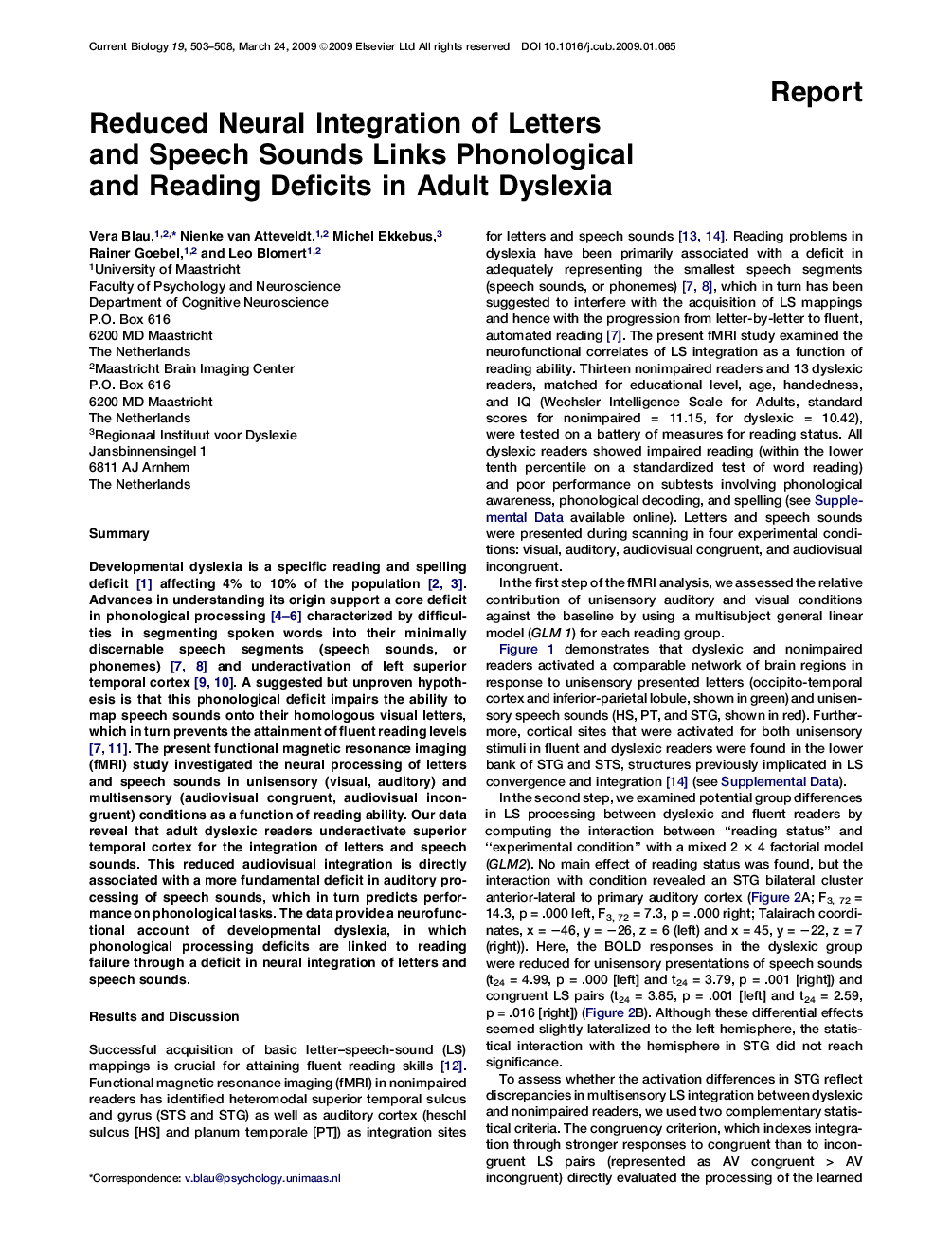| کد مقاله | کد نشریه | سال انتشار | مقاله انگلیسی | نسخه تمام متن |
|---|---|---|---|---|
| 2043467 | 1073362 | 2009 | 6 صفحه PDF | دانلود رایگان |

SummaryDevelopmental dyslexia is a specific reading and spelling deficit [1] affecting 4% to 10% of the population 2 and 3. Advances in understanding its origin support a core deficit in phonological processing 4, 5 and 6 characterized by difficulties in segmenting spoken words into their minimally discernable speech segments (speech sounds, or phonemes) 7 and 8 and underactivation of left superior temporal cortex 9 and 10. A suggested but unproven hypothesis is that this phonological deficit impairs the ability to map speech sounds onto their homologous visual letters, which in turn prevents the attainment of fluent reading levels 7 and 11. The present functional magnetic resonance imaging (fMRI) study investigated the neural processing of letters and speech sounds in unisensory (visual, auditory) and multisensory (audiovisual congruent, audiovisual incongruent) conditions as a function of reading ability. Our data reveal that adult dyslexic readers underactivate superior temporal cortex for the integration of letters and speech sounds. This reduced audiovisual integration is directly associated with a more fundamental deficit in auditory processing of speech sounds, which in turn predicts performance on phonological tasks. The data provide a neurofunctional account of developmental dyslexia, in which phonological processing deficits are linked to reading failure through a deficit in neural integration of letters and speech sounds.
Journal: - Volume 19, Issue 6, 24 March 2009, Pages 503–508